Buildings are an expression of what we love. Love is worn on facades, demonstrated through circulation, or exposed through materiality. The built environment subconsciously forms social connections, circulation decisions, or even attitudes toward nature. Therefore, architecture is a powerful expression of love and a formation of love. Applying a (value: architecture) output ratio to the extremely diverse range of architecture I’ve experienced is fascinating.
Here is a summary of how love and values are expressed through architectural typology, materials, form, and layout.
City Palace (Udaipur) 1559 -1950
Values: Servitude to royalty, hierarchy, protection/defence.
Status is very important in India. This palace exposes the love of strong hierarchy – especially through its’ placement – on a hill where it can be viewed from every place in the city.
Architecture: The Rajput-style fortified palace is spread over a hilltop to see approaching enemies. It contains a combination of Mewar, Mughal, and Indo-Aryan (Indian-European) influences.
Also, Udaipur City Palace continues to house the royal family – the Singh Mewar Maharana’s (warriors) that have been on the throne for 22 generations! We met the current Prince on his 38th birthday. I had never seen so many bouquets in my life, and one of the cakes was 2m long. Udaipur remains supportive of the Royal Family, not in the same support of 16th Century Indians, whose taxes, resources, and lives were exchanged in the creation of this marble masonry palace.

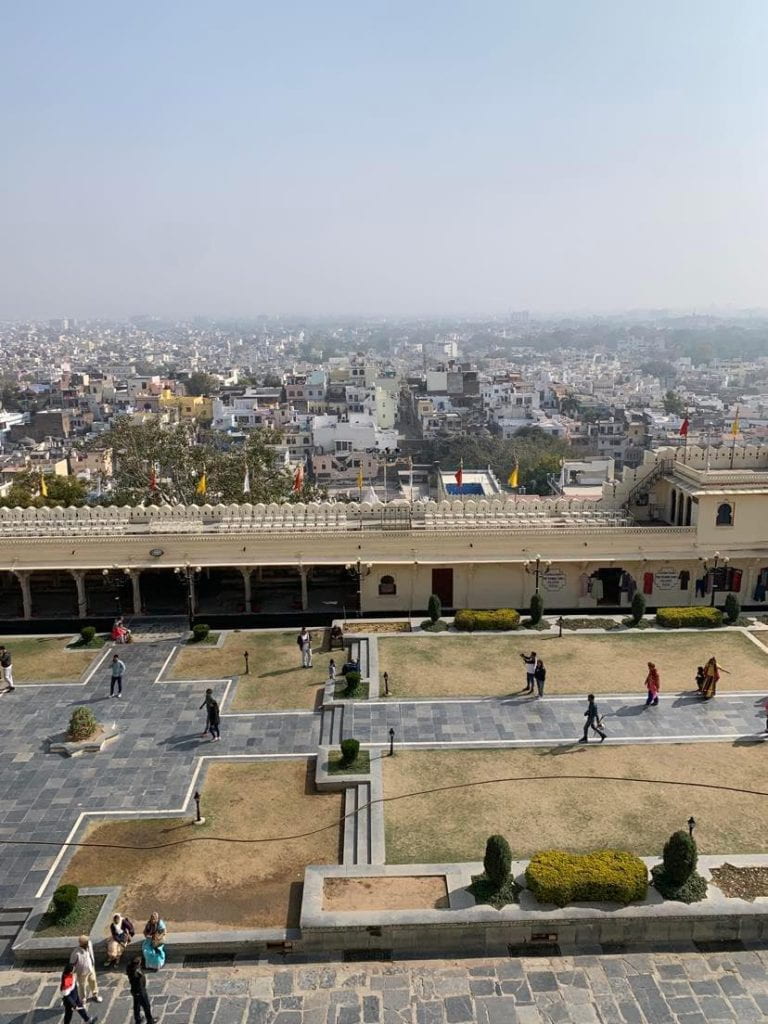
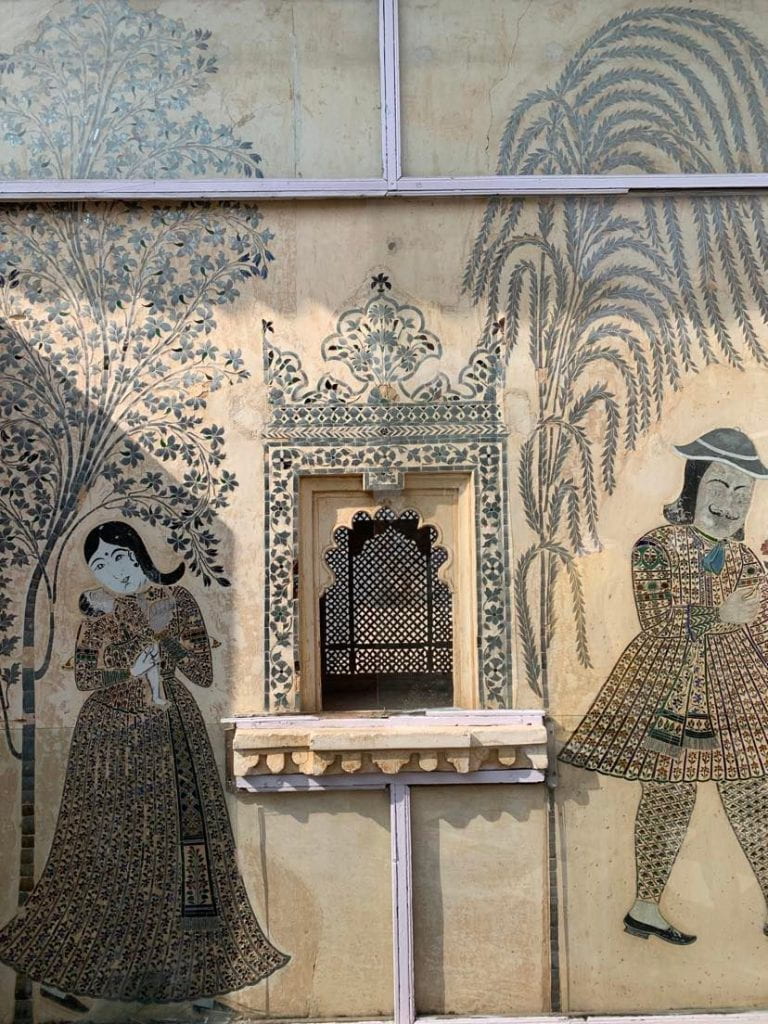
Manakula Vinayagar Temple – Ganesa Temple (Pondicherry) 1520
Values: Hindu temples represent ultimate devotion to the deity inside. Temple architecture reveals devotional love and servitude to the Divine.
Architecture: Ganesa Temple was packed with detailed ornament, strong sensory rituals, rich colours, offerings (food, flowers, money, incense), and music at all times of the day. This is the Dravidian Hindu style (South Indian). The golden chariot was 350,000 rupees – all from devotee donations. People break coconuts at the front to represent the clearing of the pathway before a new beginning – and gain the blessing of Ganesa.

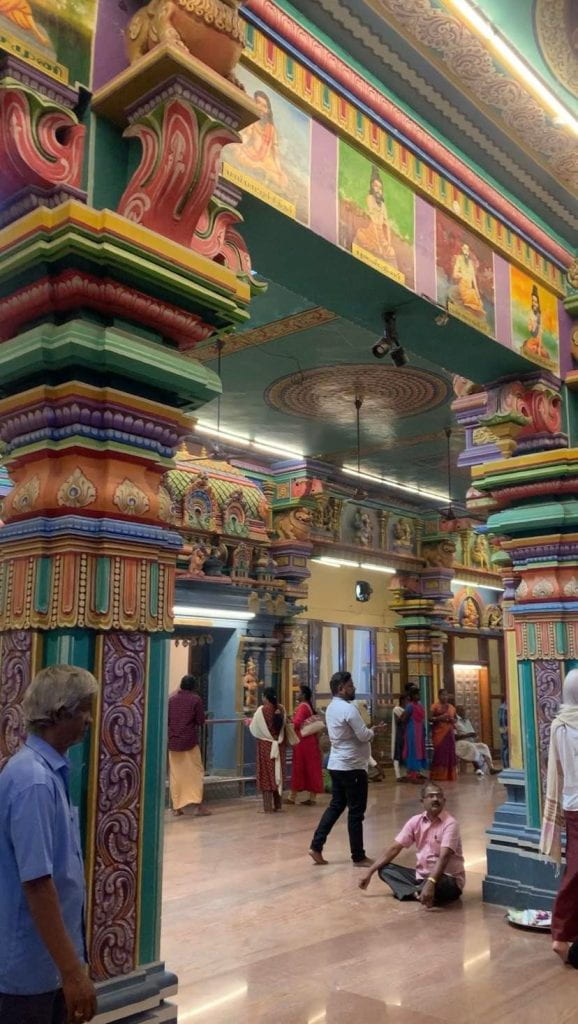
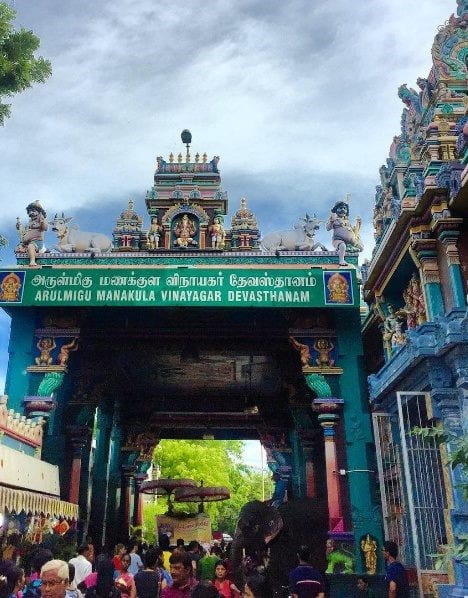
Flipkart (Bangalore) 2015
Values: Efficiency, innovation, growth, consumer satisfaction.
Architecture: The Flipkart HQ is a typical 2010’s rectangular office building that uses too much glass and is trying to be a “European street – like a mall, a mini–European City in the middle of Bengaluru” (from the RSP Architects website). It’s more mall than European street. But it’s also more airport than mall because of the gate security and the fact that there are so many mirrors that you feel like you are being watched all the time.
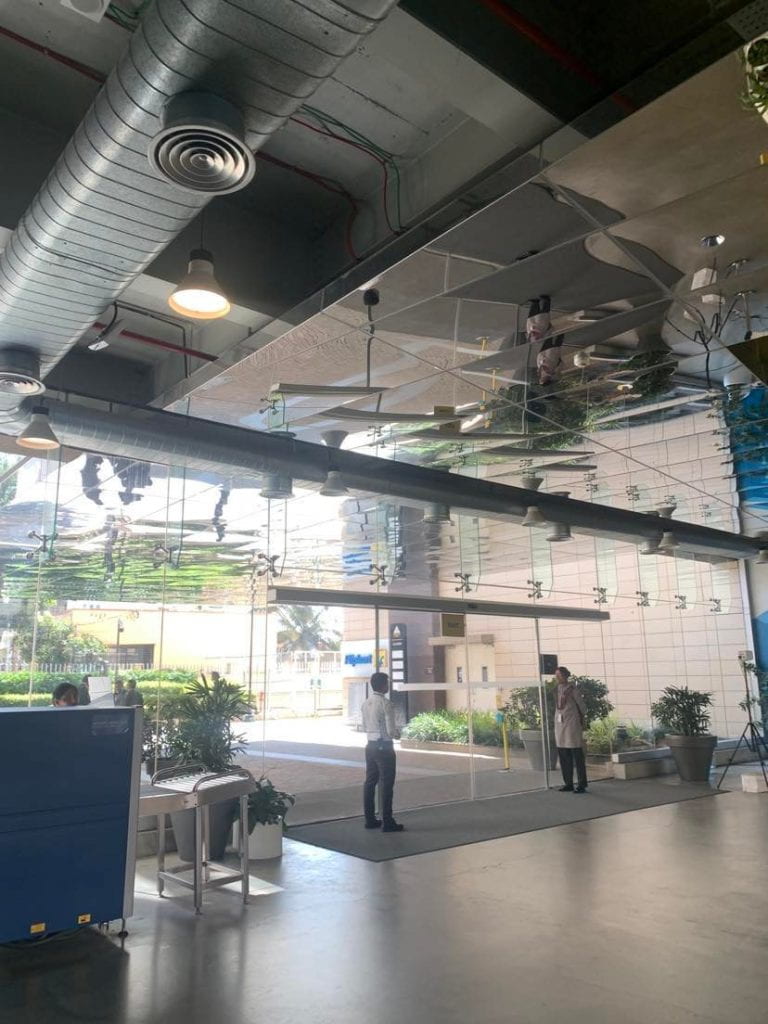
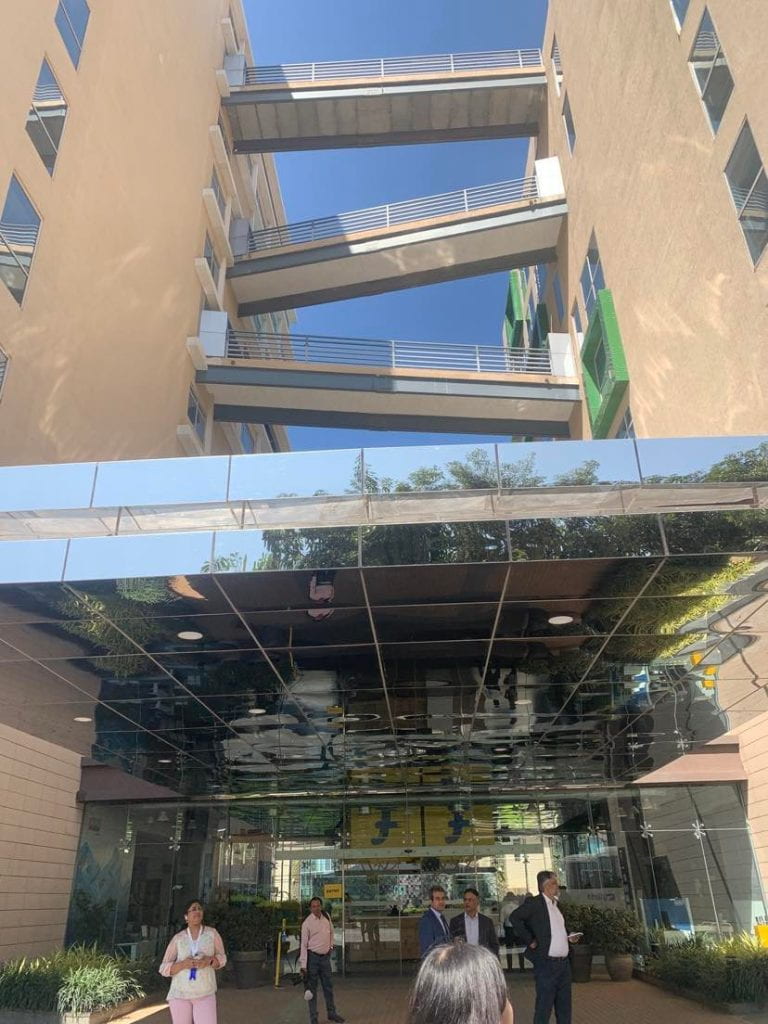
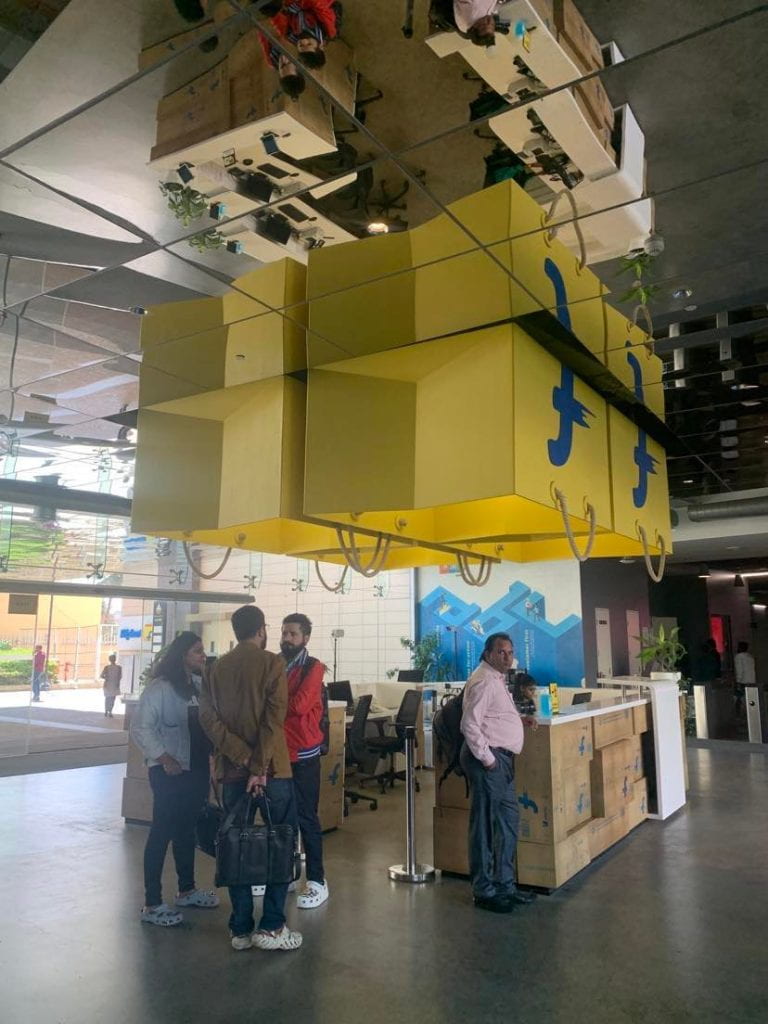
Auroville (Pondicherry) 2010-current
Values: Re-creation, sustainability, community, innovation, and exclusivity for strong unity within the intentional community. Their vision is creating a renewed human existence where all nations co-exist and practice increased consciousness through yoga and meditation – based on the teachings of Sri Aurobindo and Mirra Alfassa.
Architecture: It is difficult to summarise the architecture because it’s so diverse. The Matrimandir (meditation chamber) is an extravagant golden globe of gold-leaf circular panels and a fully white interior. A stark contrast with the bamboo structures and treehouses. Pictured here is a treehouse made of coconut bark flooring, tetra pack corrugated roofing, and compacted landfill foundations. It’s the most joyous, experimental, sustainable, and genius architecture I have encountered.
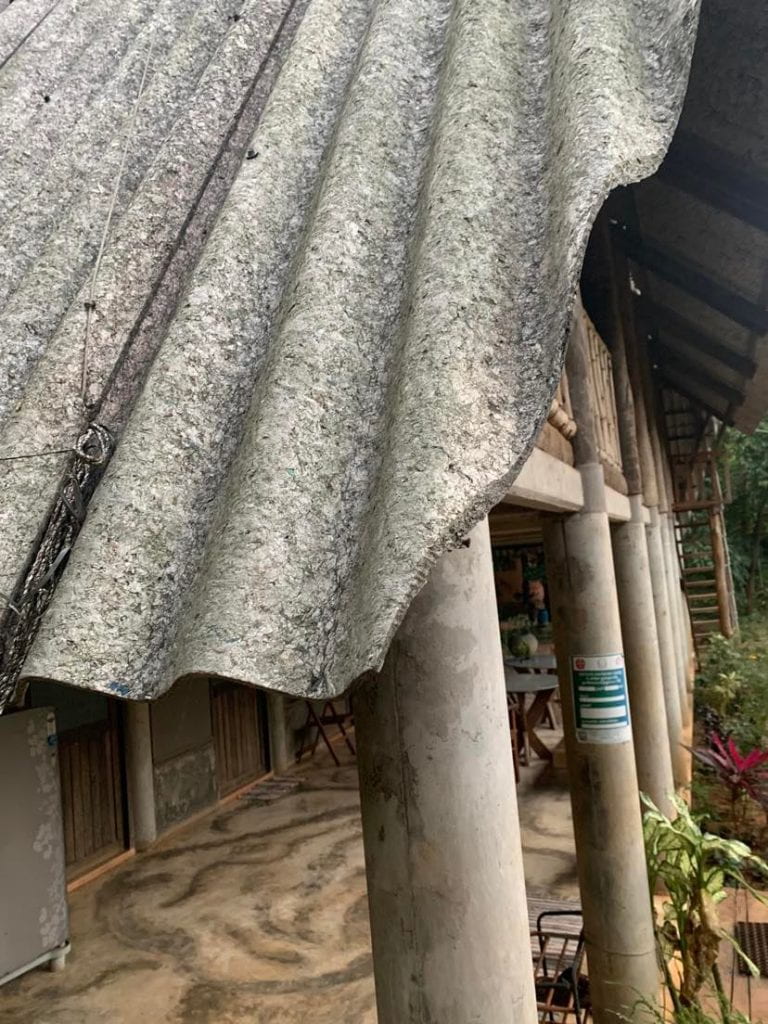
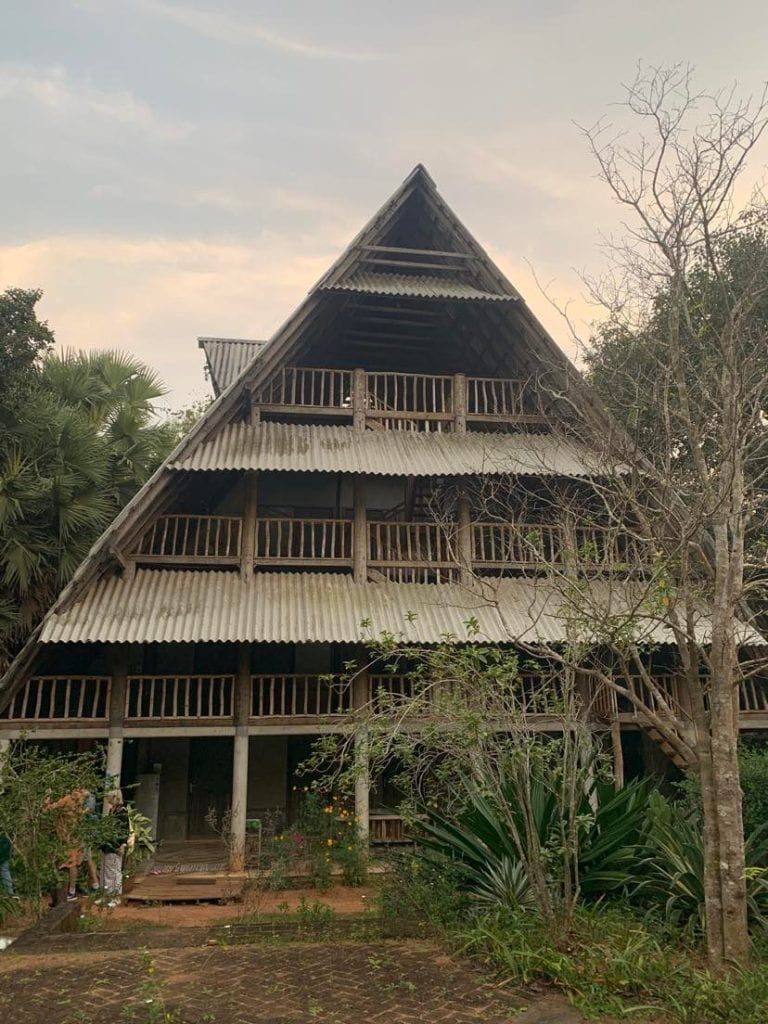
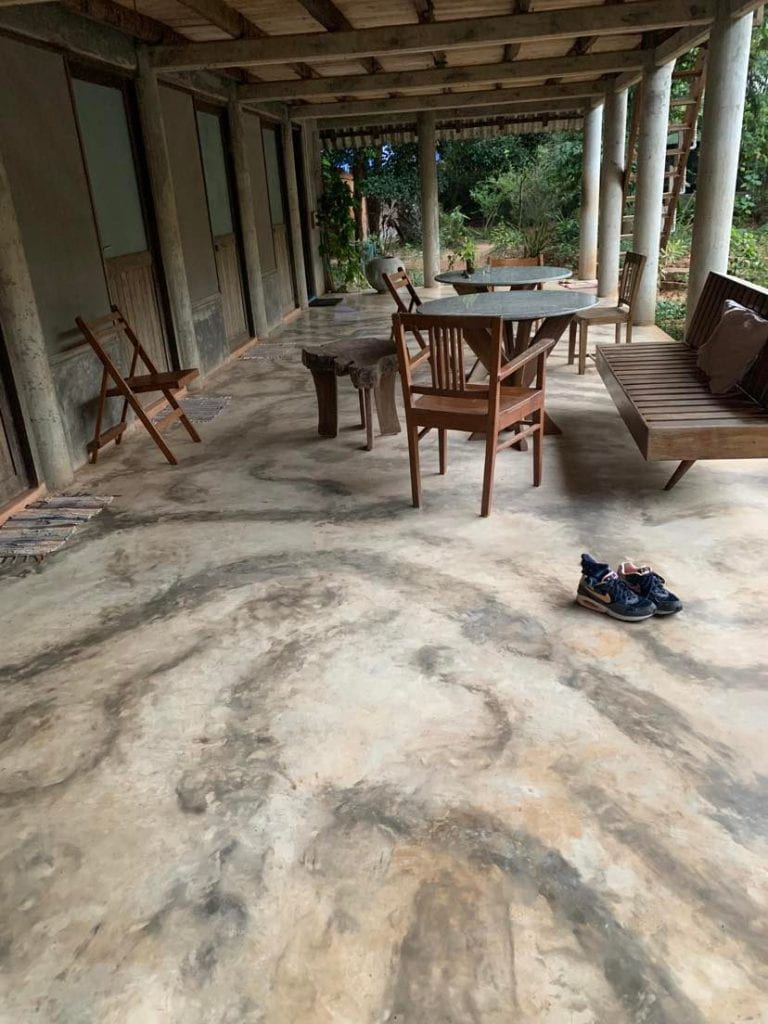
City Palace (Jaipur) 1727
Values: Honour, servitude, status, identity, and reputation.
Architecture: This Rajput-style Palace was by 18th C Maharaja Jai Singh II (who seemed to build everything in the area). Interestingly, it was built according to the Vastu shastra – the traditional Indian system of architecture based on ancient texts articulating design, layout, and measurements – hence the grid pattern. The symmetrical layout holds centralised courtyards for the Maharaja to be on display with an audience. The Mughal-style palace walls are super high for defence with towered lookouts
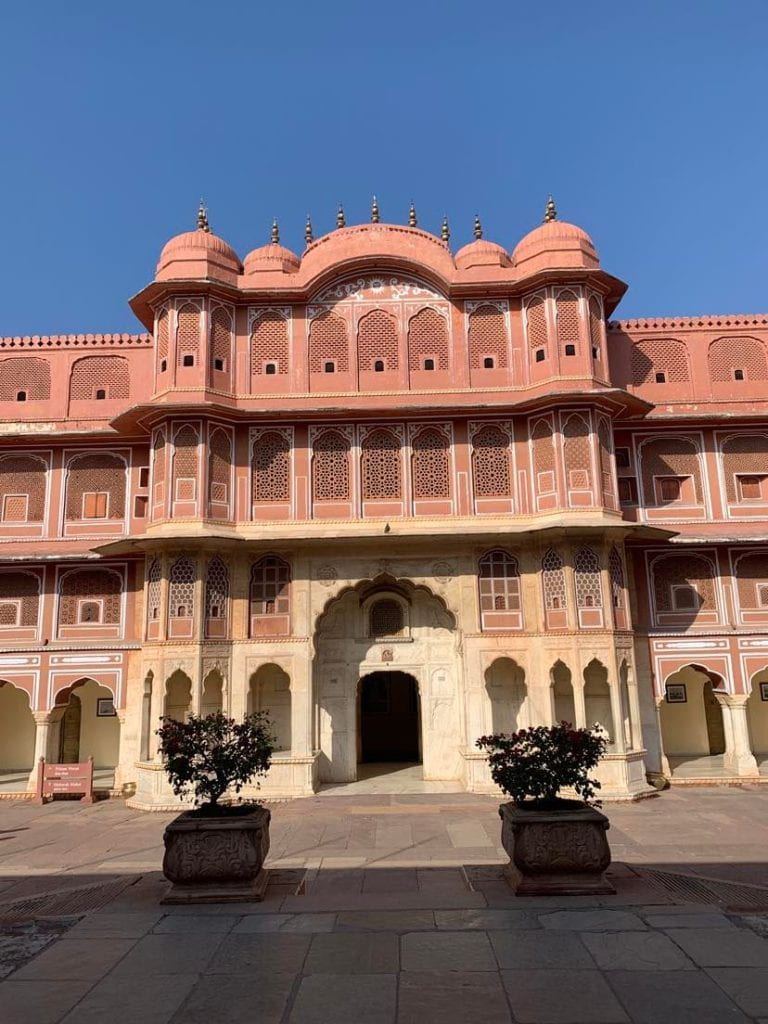
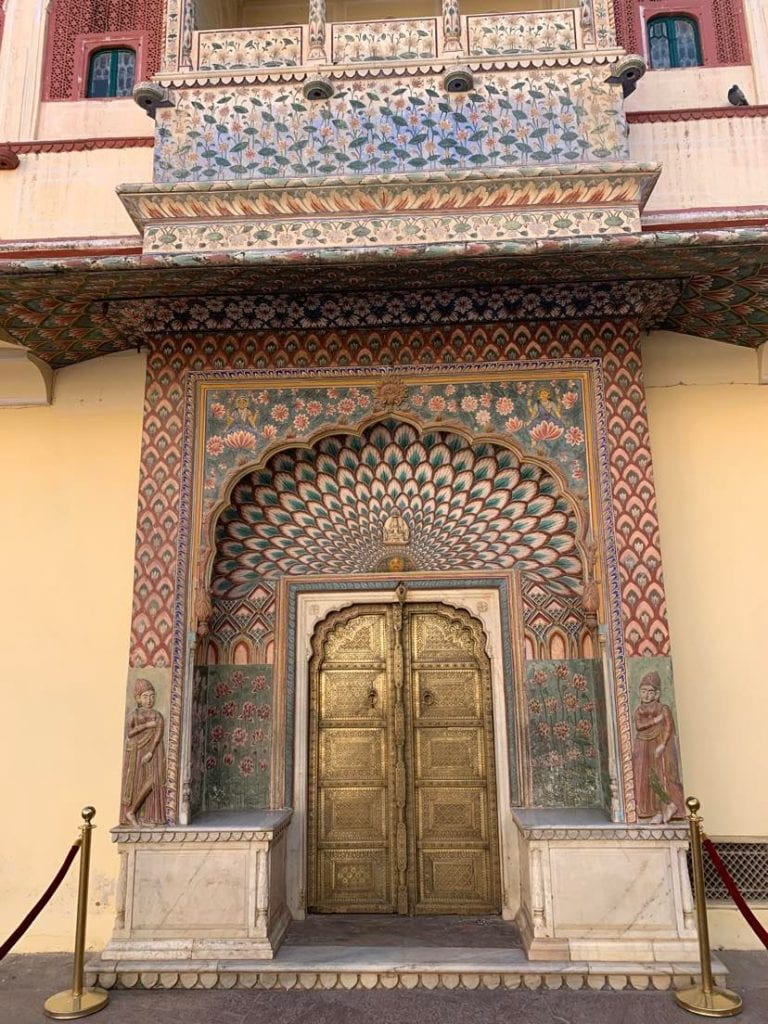
Leheriya Gate
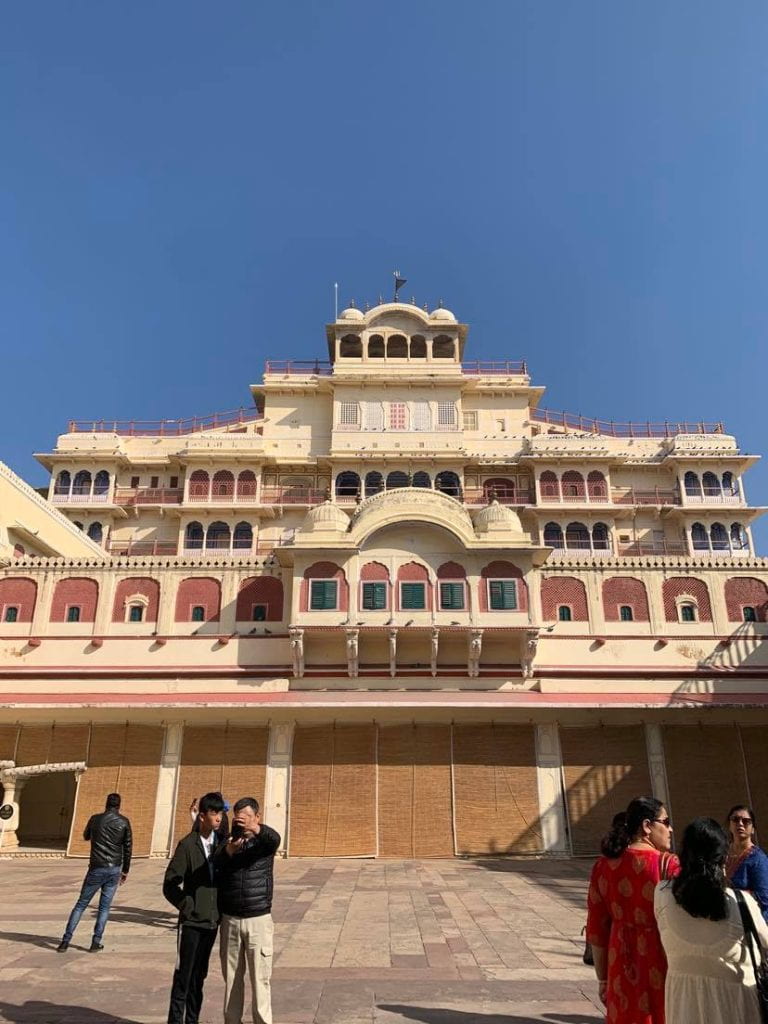
HIDESIGN (Pondicherry) 1990
Values: Sustainability, quality craft, innovation, ecological care.
Architecture: Ray Meeker (the architect) used clay from the site to construct all the bricks. The vernacular brick designs contain beautiful patterns cooling hot air as it passes through the gaps. The site informed the organic circulation and landscaping, which is reflected in the varying brick formations – curved, diagonal and patterned
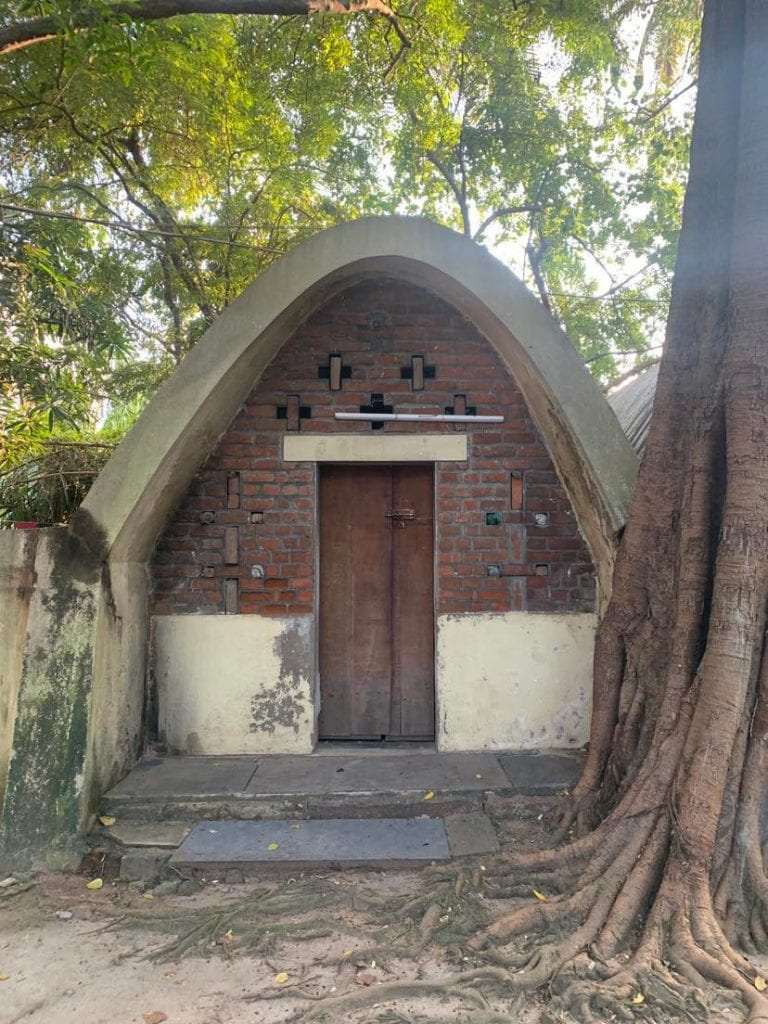
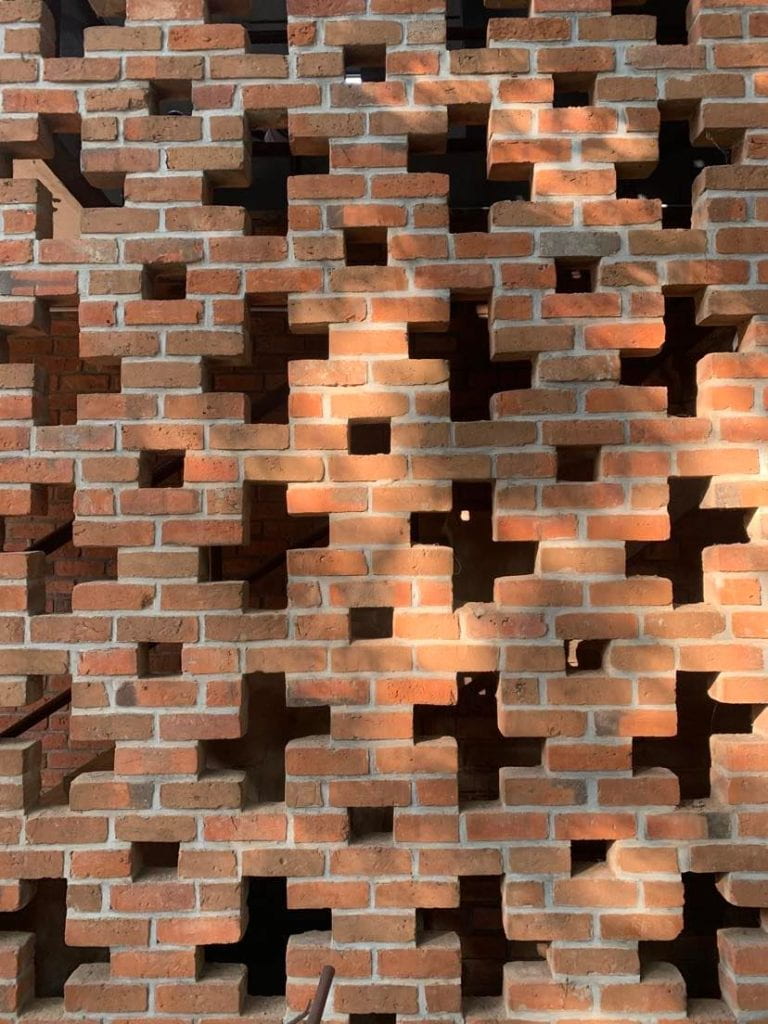
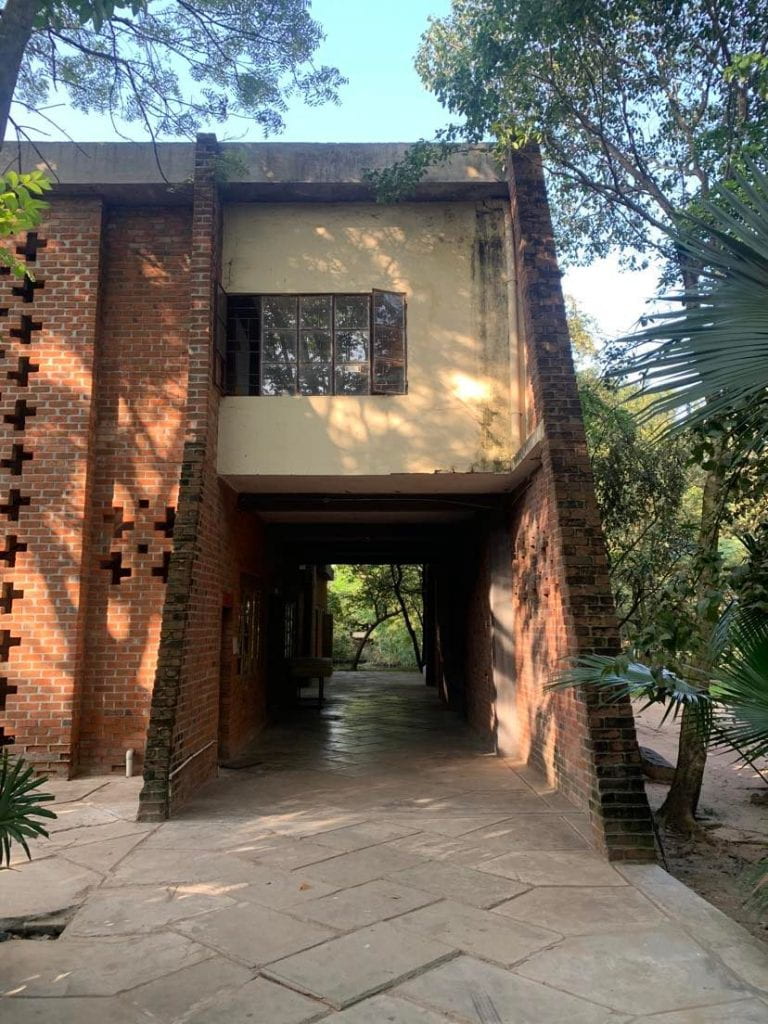
Isha Yoga Foundation (Coimbatore) 1992
Values: Simplicity, stillness, devotion, ‘cultivate individual potential,’ rejection of the material world to gain a closer consciousness.
Architecture: Many buildings are natural materials of brick, lime and mud. Sadhguru wrote, “the buildings are relaxed – you can even say they are meditating.” There is a strong emphasis on landscaping- especially with flowers to respect time passing and the seasons. The guest houses we stayed in have a strong minimalist streak – even down to the thickness of the mattresses. This is all strongly contrasting to the 34m tall Adiyogi statue made of steel…
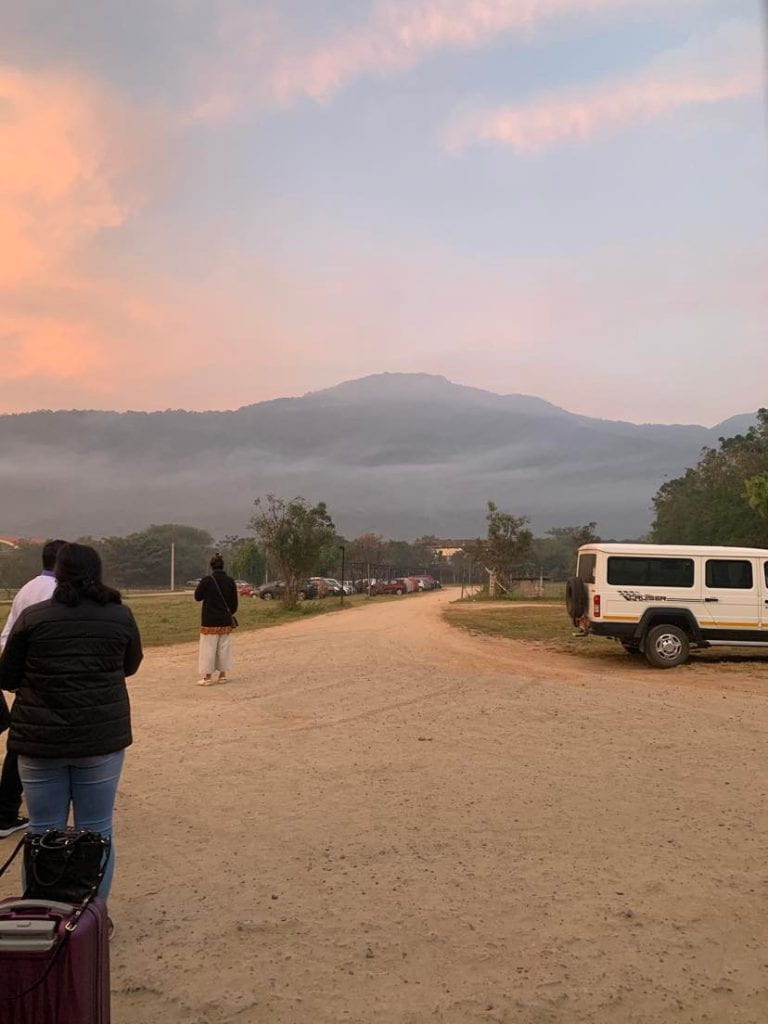
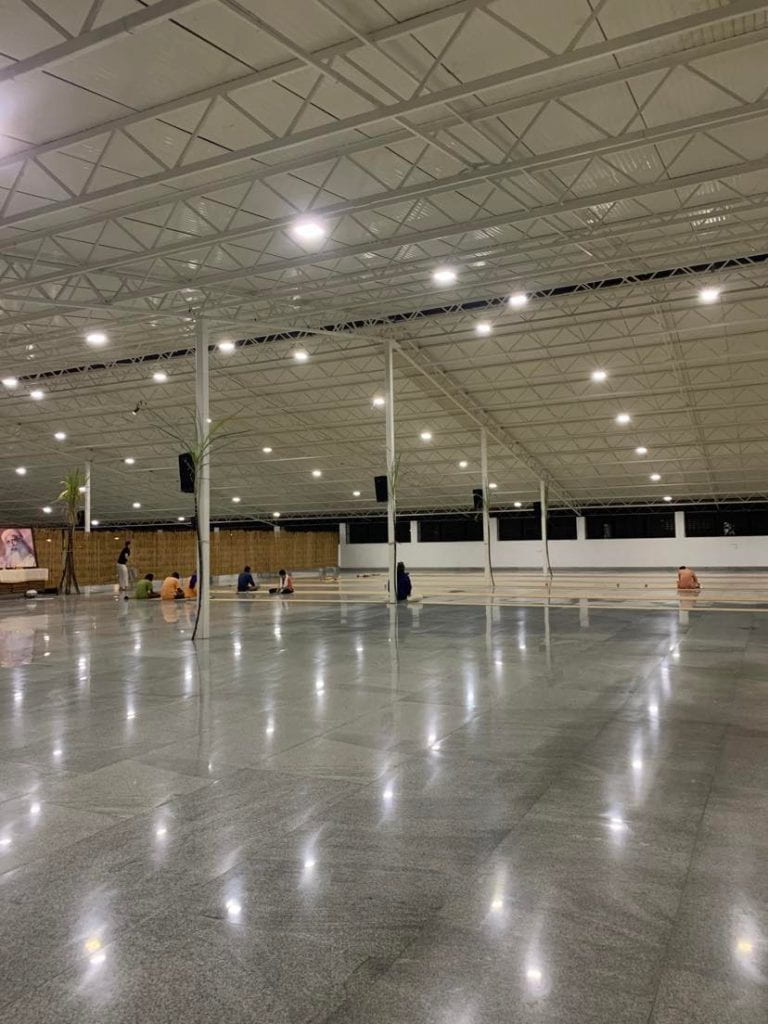
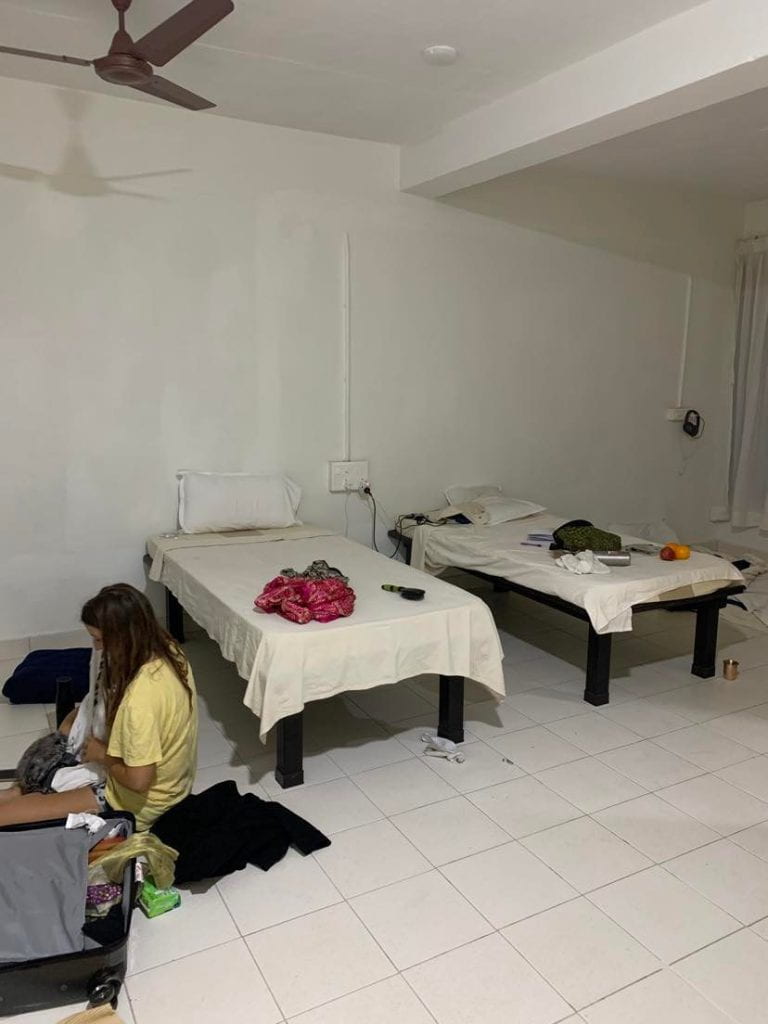
Sabarmati Ashram (Ahmedabad) 1917
Values: The Ashram vows were non-violence, truth, non-stealing, brahmacharya, non-possession, bread labour, control of the palate, fearlessness, equal regard for all religions, Swadeshi (using Indian materials) and removal of untouchability (Dalit caste status).
Architecture: Expression of Hindu Swadeshi in the fight for independence means materials made and manufactured in India – combining Hindu architectural and cosmological ideas with modern functional planning. Simple homes with no decoration. Strong emphasis on landscaping and gardening for times of morning prayer.
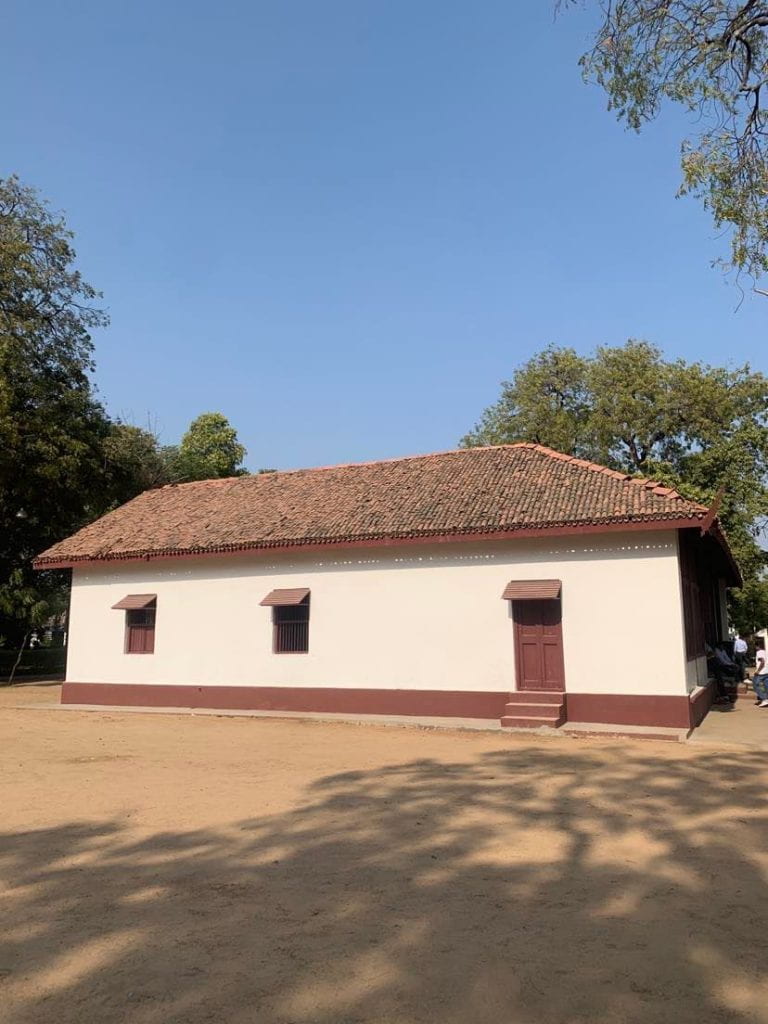

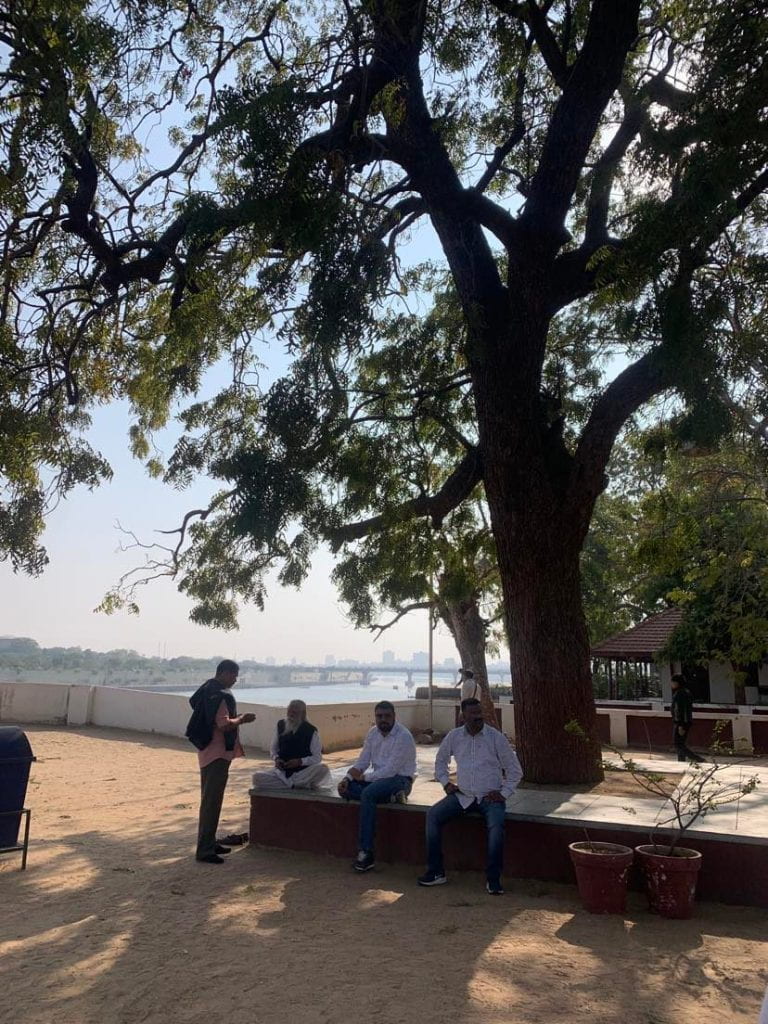
Infosys (Mysore) around 1950
Values: Education, formality, respect, structure, innovation.
Architecture: It was confusing to hear that this neo-classical colonial building was designed after Indian independence. However, it checks out, considering this is a college to fast-track people for skills required for the professional engineering industry. They are aspiring for greater things, learning corporate etiquette, structure and formality – which are all that neo-classical buildings have to offer.

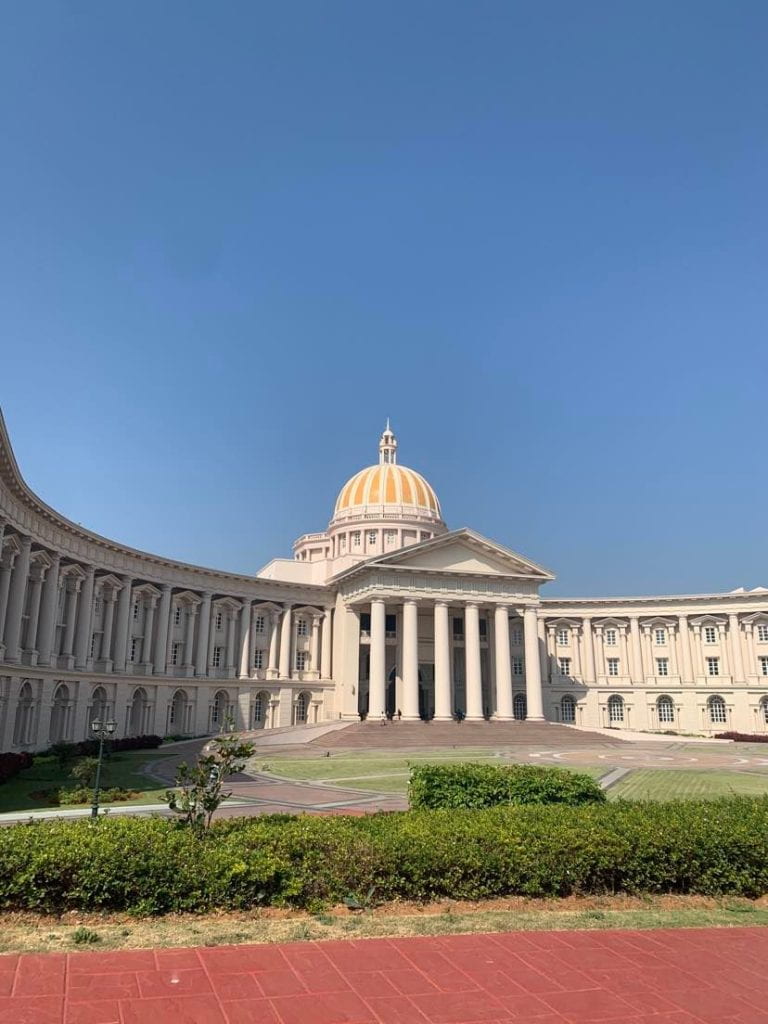
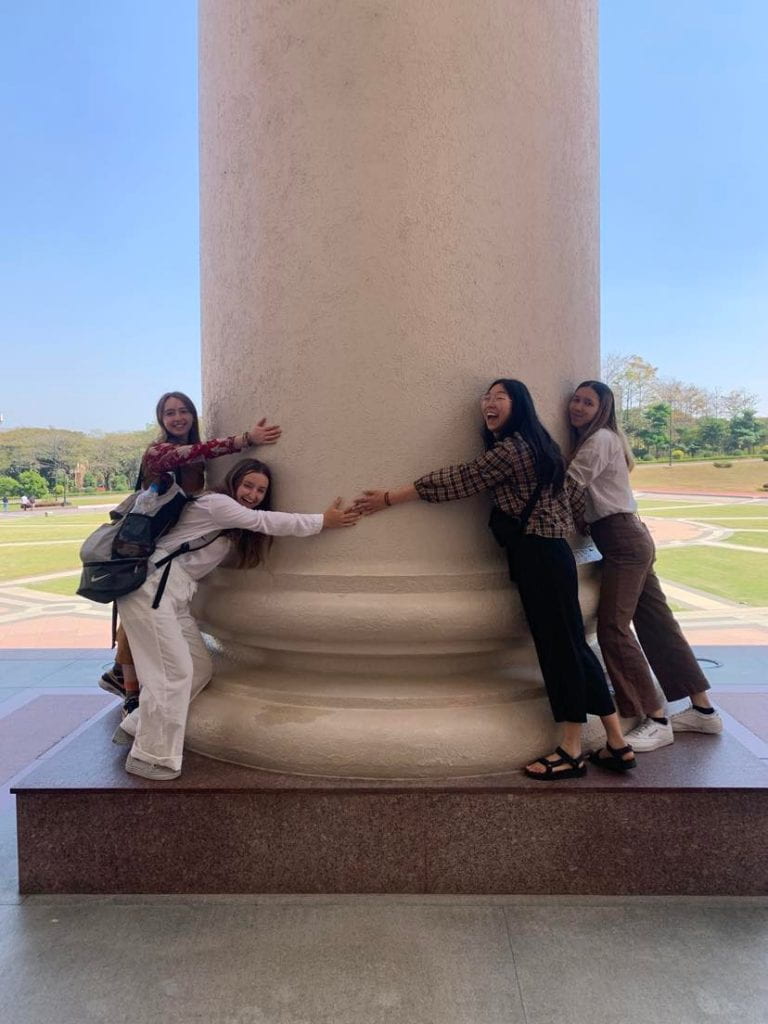
Cadjan structures (Auroville – Pondicherry)
Values: Frugal innovation – using the materials available to get the job done.
Architecture: The traditional process of weaving coconut leaves forms a watertight membrane for roofing or a threshold barrier for fencing. It is often used on top of tarpaulin. It would break down over time, so it would need reparation every few years. Building processes in India seem more temporal, and there is less obsession with things lasting forever.
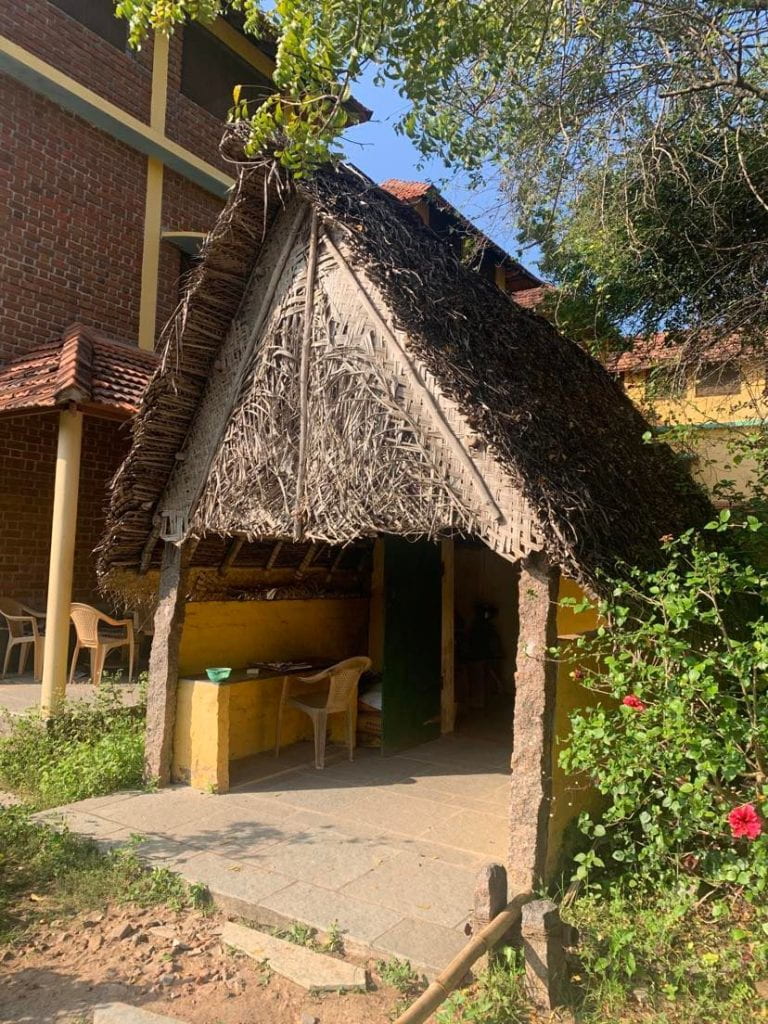
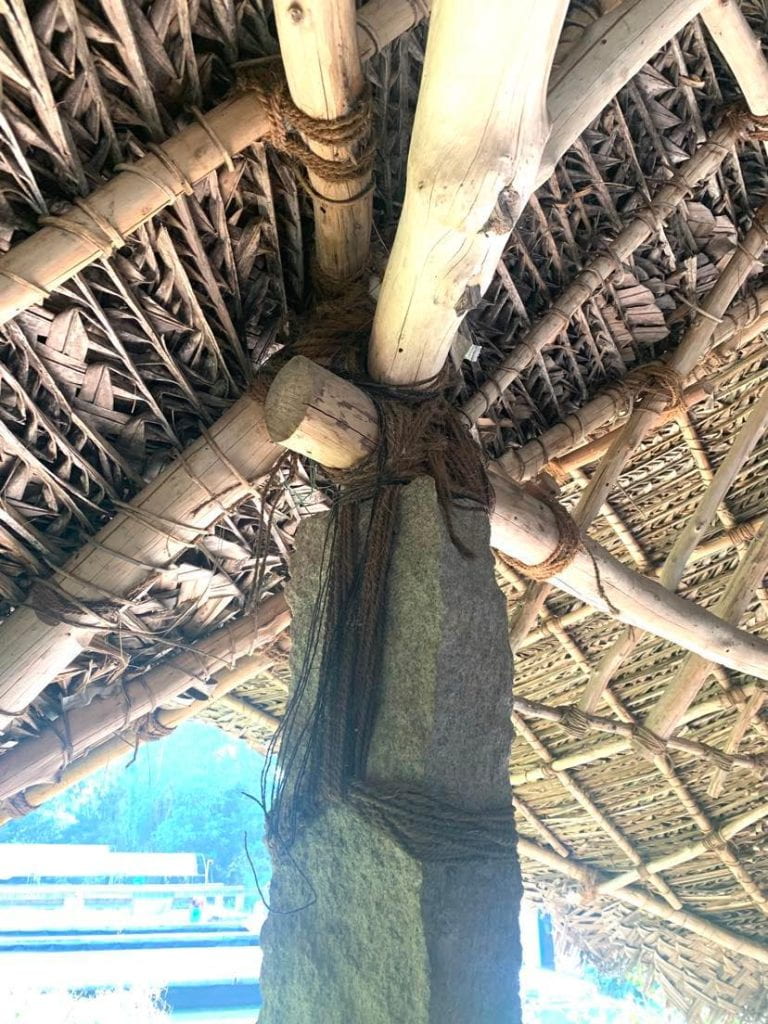
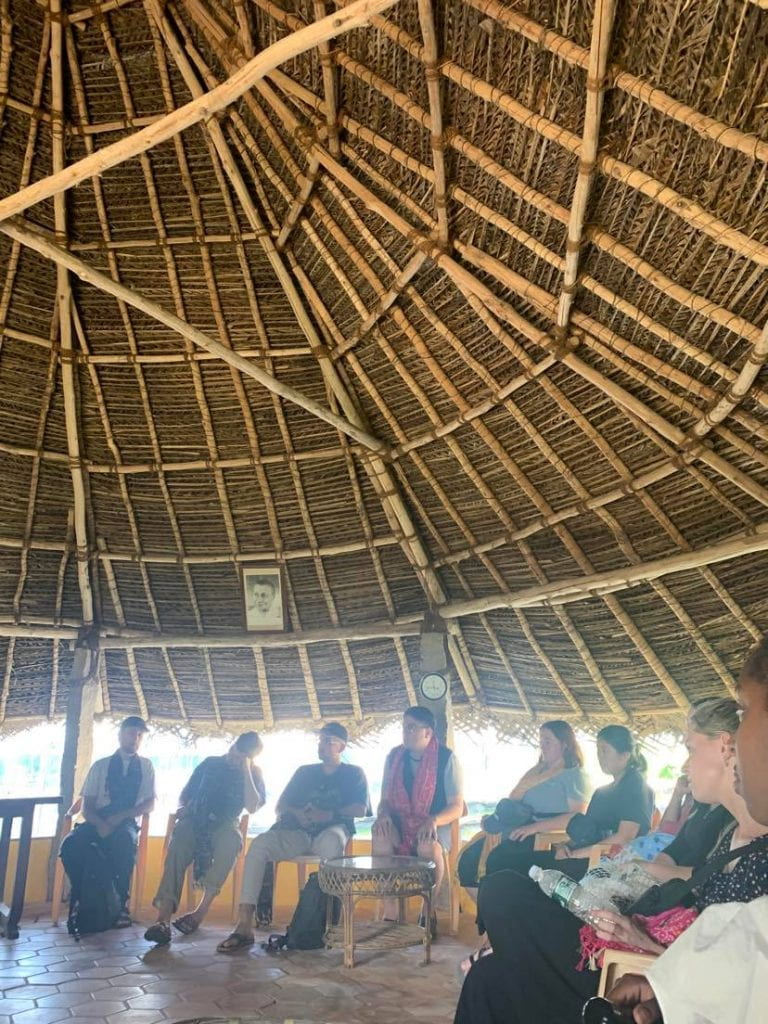
Amer Fort (Jaipur) 967
Values: Valour, loyalty, central place for local government, administration and justice.
Architecture: This Rajput and Mughal architectural style is mainly constructed from sandstone, limestone and marble. The fort contains many precious stones and vegetable dye paintings that have lasted hundreds of years. The mirrored mosaic walls and ceilings within the central courtyard are supposed to replicate the structure of Persian rugs – the symmetrical grid follows the Vastu shastra. The form follows function- to protect the people inside following the Rajput typology of defence – spread over a hill overlooking the lake to see enemies approaching.
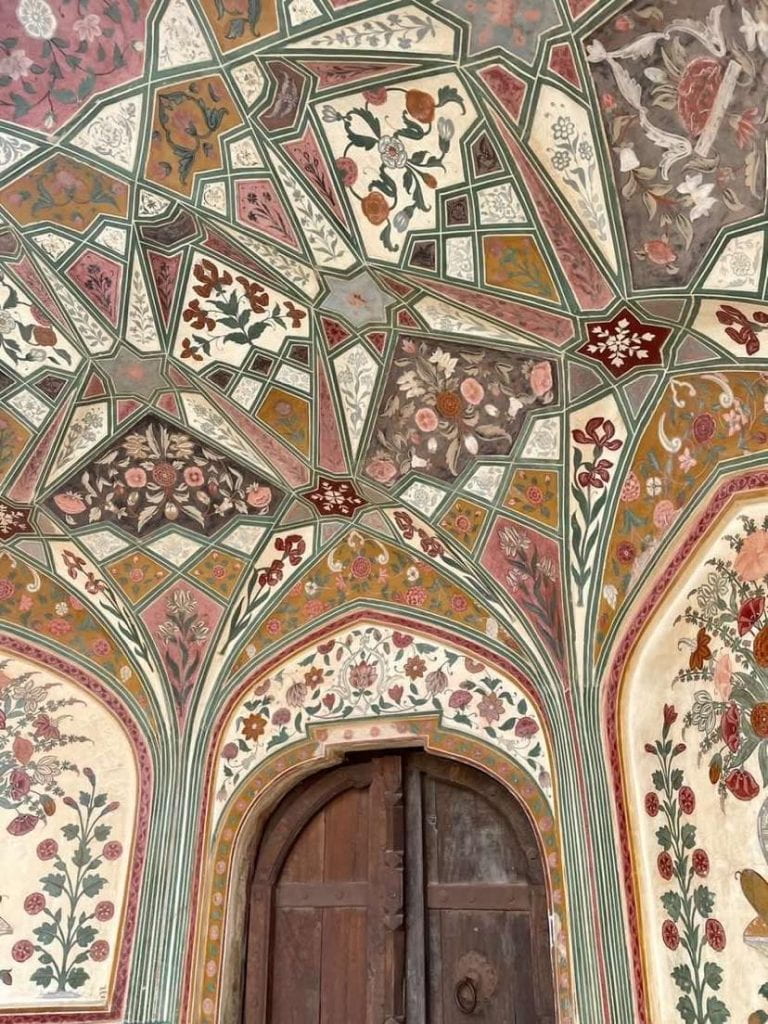
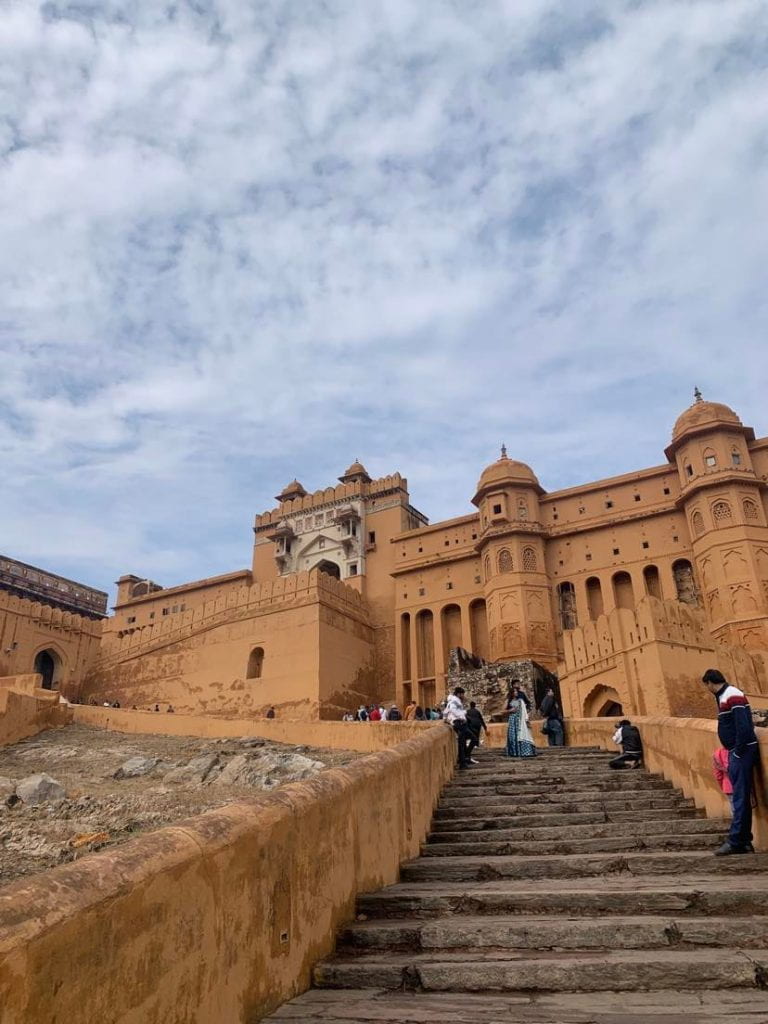
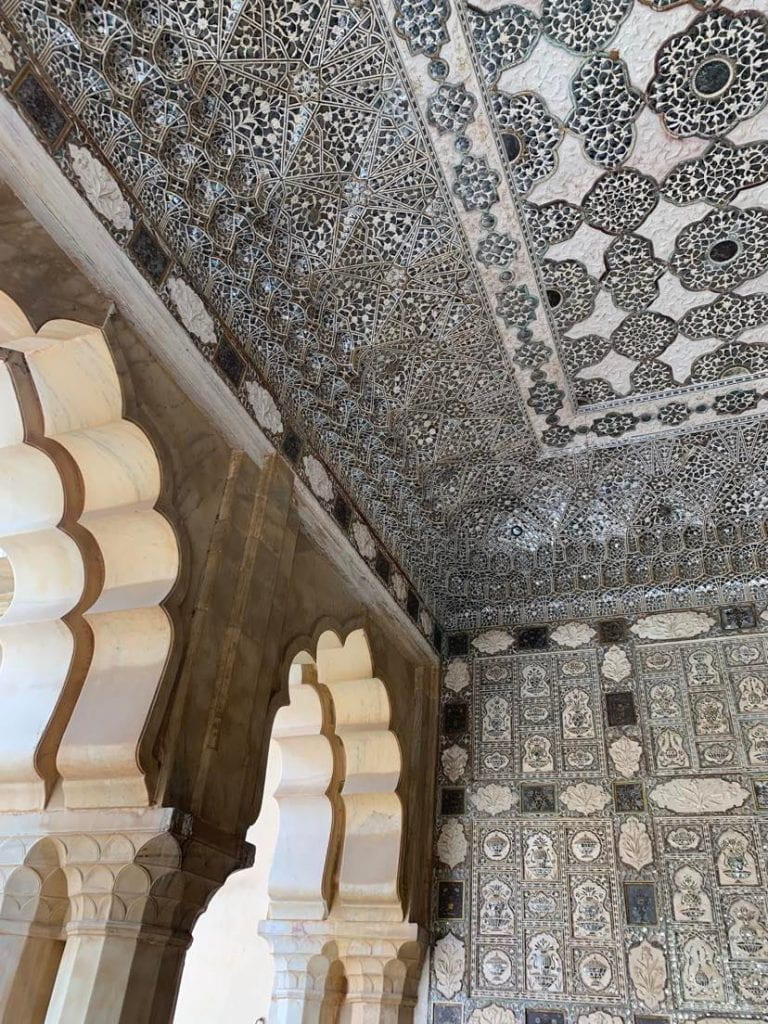
Mysore Palace (Mysore) 1897-1912
Values: Servitude of the Wadiwar dynasty – (the seat of the Kingdom of Mysore), hierarchy, dynasty identity and reputation, pride, unity, and stability. Ancient forts and palaces retain strong value expression through architecture – as buildings outlast the people and the power structures they once served.
Architecture: The Maharaja chose the British Architect Henry Irwin and Engineer B.P. Raghavulu Naidu to construct the Palace – producing a unique blend of Hindu, Mughal, Rajput, Gothic, and Indo-Saracenic typologies. There are many fascinating functions, such as a wrestling courtyard in the middle of the palace for entertainment, temples within the palace, and the Golden Howdah, the Maharaja’s elephant seat made of 85kg of gold. It cost $30 million to produce (calculated after inflation) – representing strength and stability for the people.
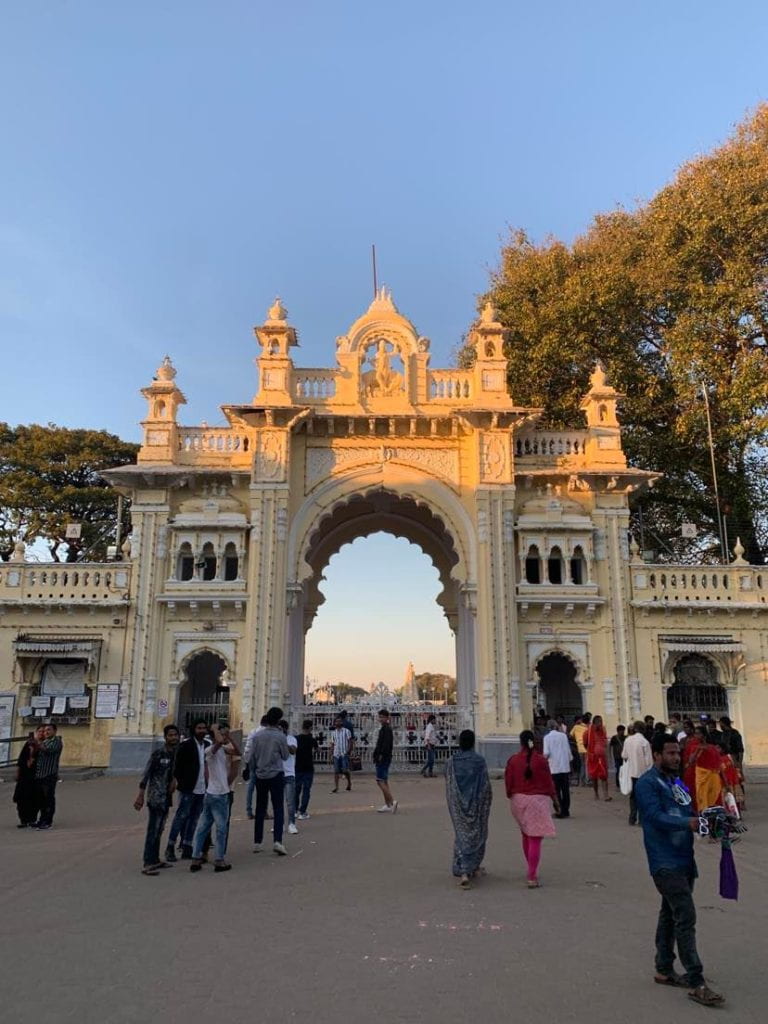
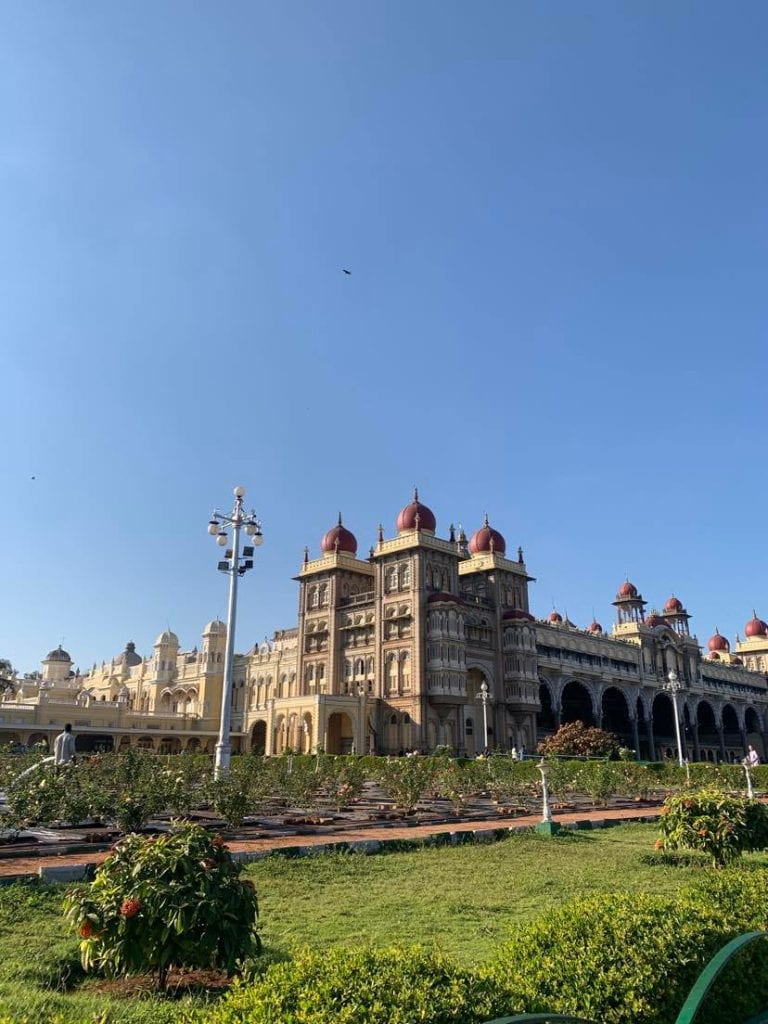
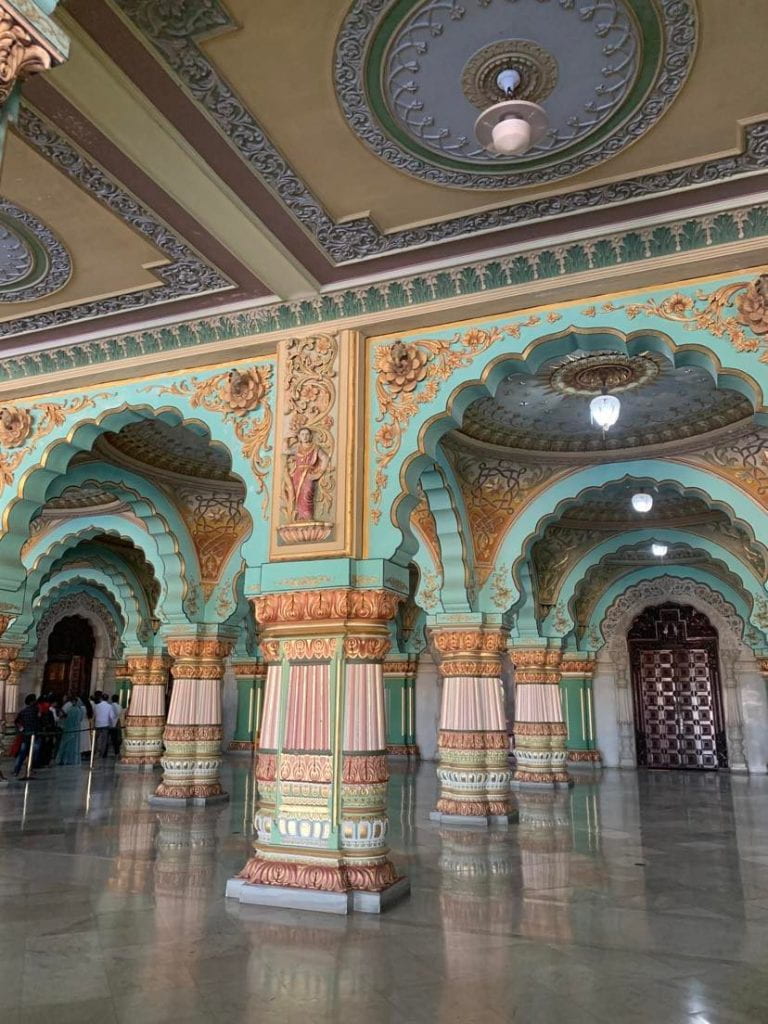
Manav Sadhna (Ahmedabad) 2015
Values: Compassion, religious unity, education, celebration.
Architecture: A Hindu shrine, Muslim mosque, and school sit side by side to encourage religious unity in the community. There is a big courtyard for community gatherings and stairs that can be used as seating for performances. It is built in the typical Indian vernacular typology, using passive ventilation for hot weather with minimal glass
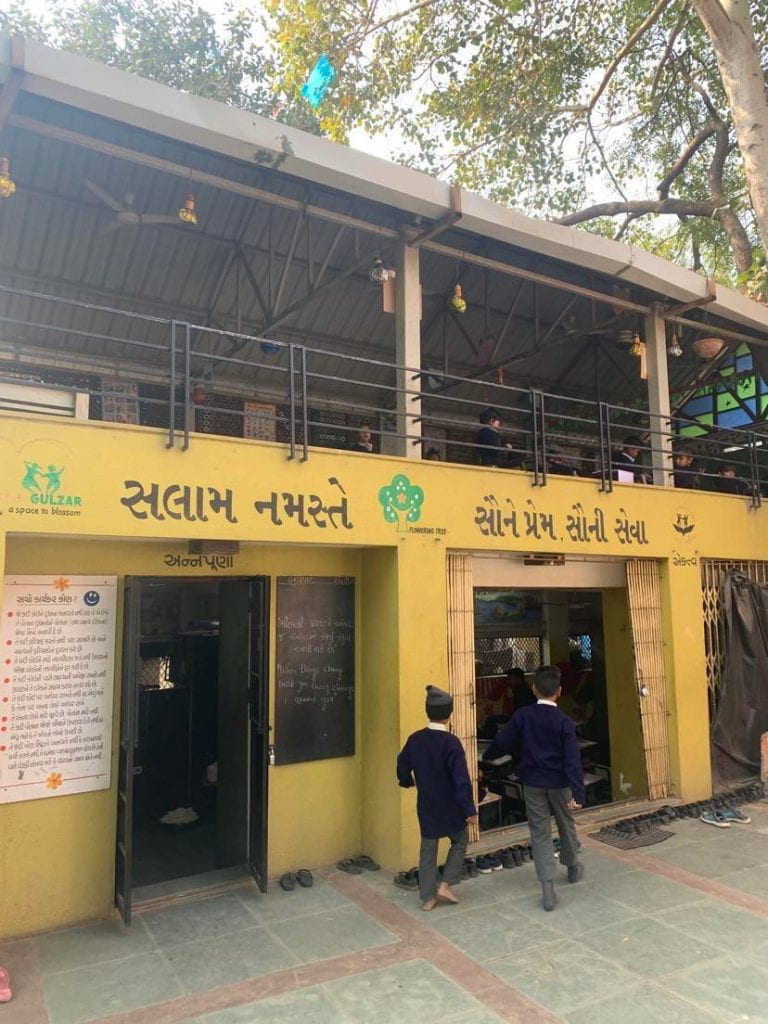
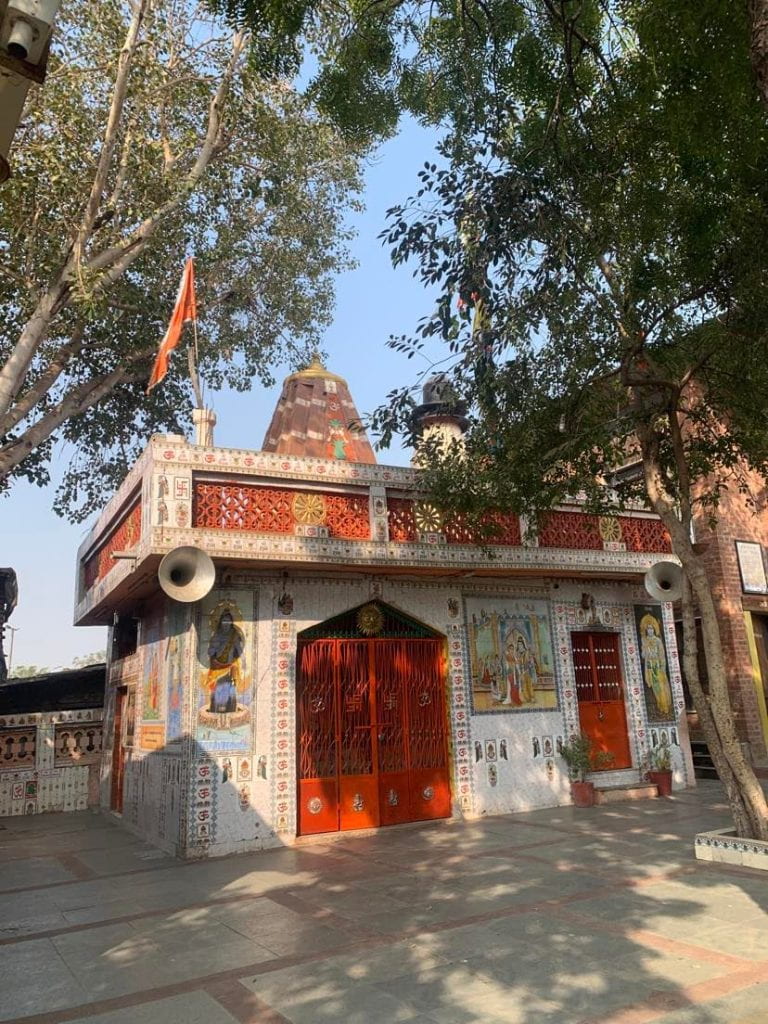
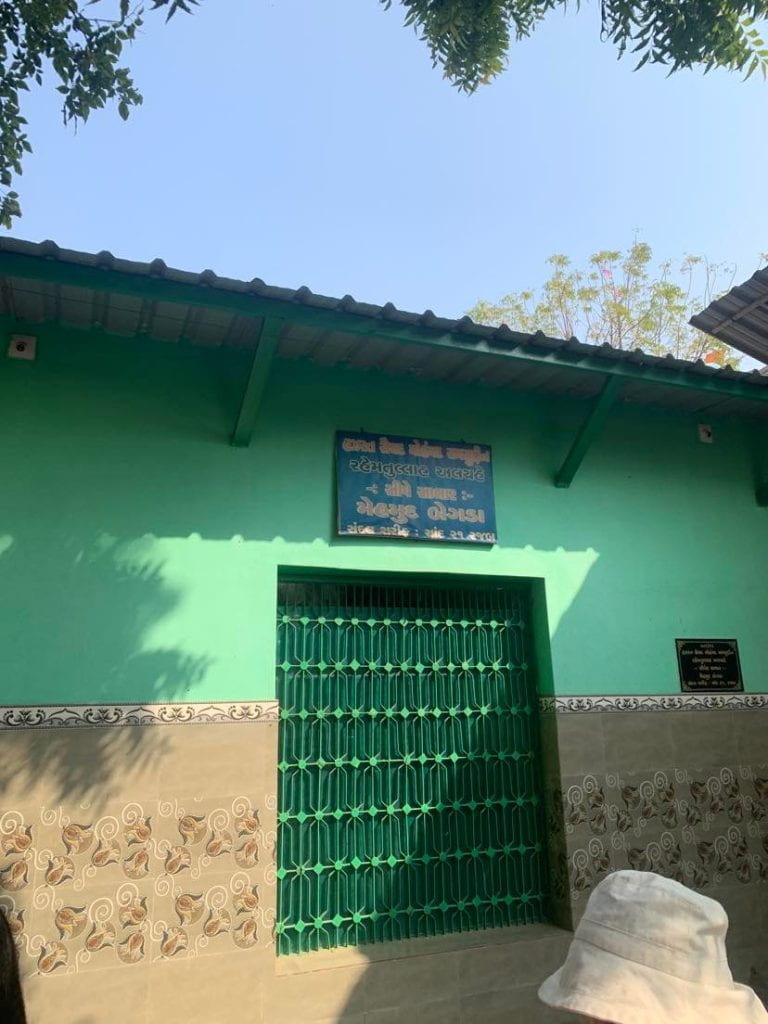
Architecture, power and servitude
Ancient palaces in Rajasthan and new modernist skyscrapers in Bangalore have strongly contrasting architectural typologies. However, they have one main similarity. They both reveal the basic human desire for something to have control over us. In the West, where we look for this has transferred – as power and trust have dispersed from institutions (churches, religious groups and governments) to individuals (meaning that one person on social media can have political influence just as strong as an MP). This Western sway affects India through globalisation – as seen through organisations like Flipkart following modernist architectural typologies valuing productivity and individual progress. Modernist Architects such as Rem Koolhaas and Norman Foster pioneered monolithic glass skyscrapers for a maximum worker-to-floor area ratio, reflecting our desire for increased productivity, leading to increased profits. Our skyscrapers, stripped of decoration, are not even remotely aesthetic – a combination between tight budgets and bad design decisions. Generally, we place more resources, money and time into ourselves rather than into a religious organisation, royal family or city temple. If this is where we place our love, our buildings reflect this.
My favourite expression of love through budling was at Manav Sadhna community centre and school. It gives me hope in many ways, but mostly for my architectural career… compassion in architecture is truly possible!
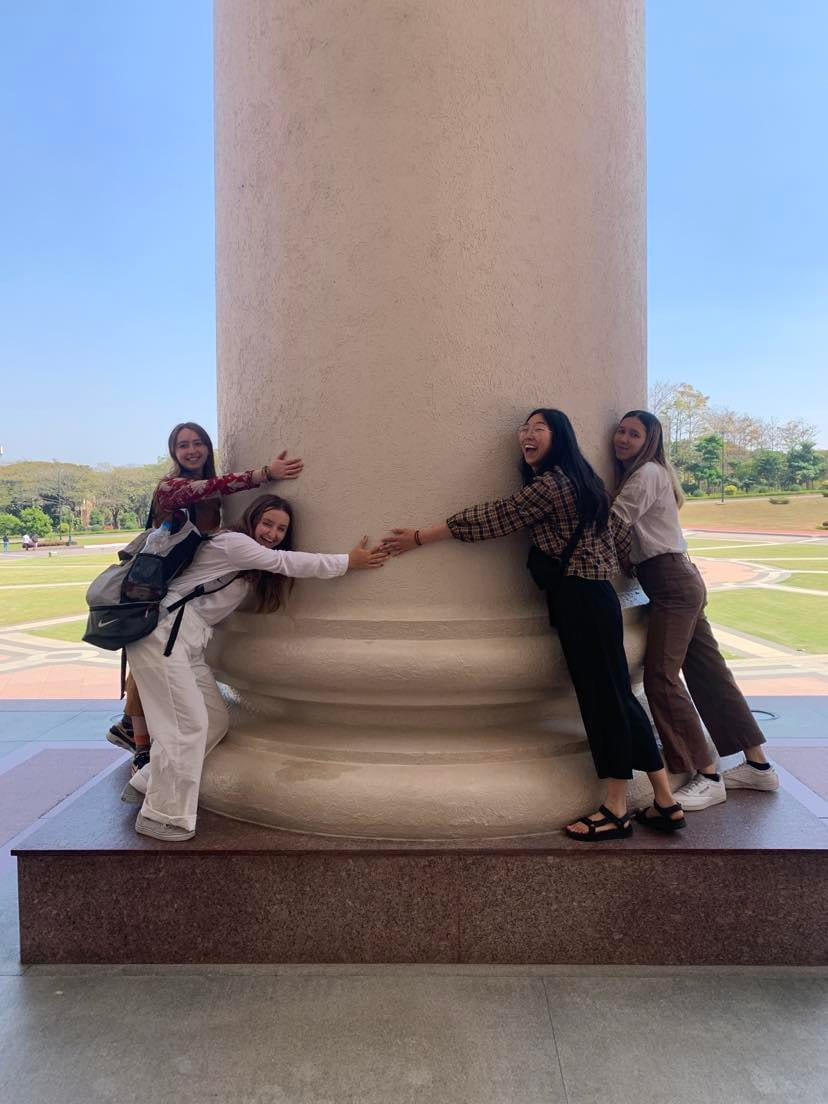
‘Compassion in architecture’, now there’s a beautiful concept. Can’t wait to hear more about your epic adventures 💚💚💚